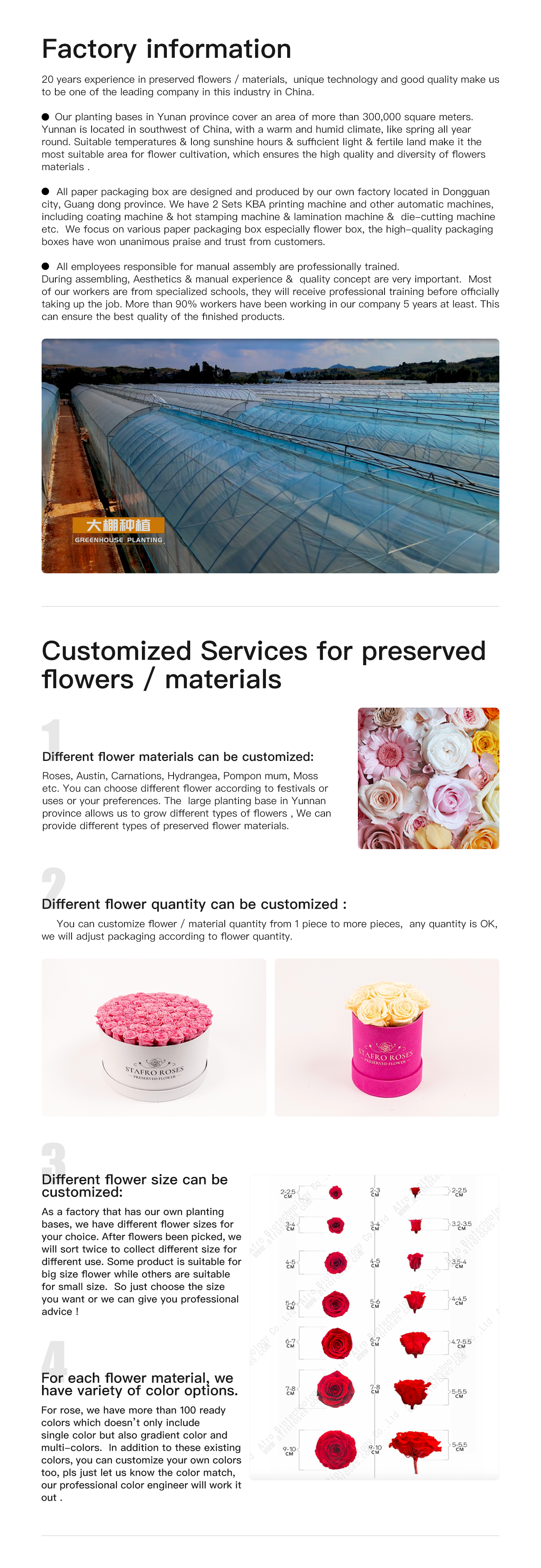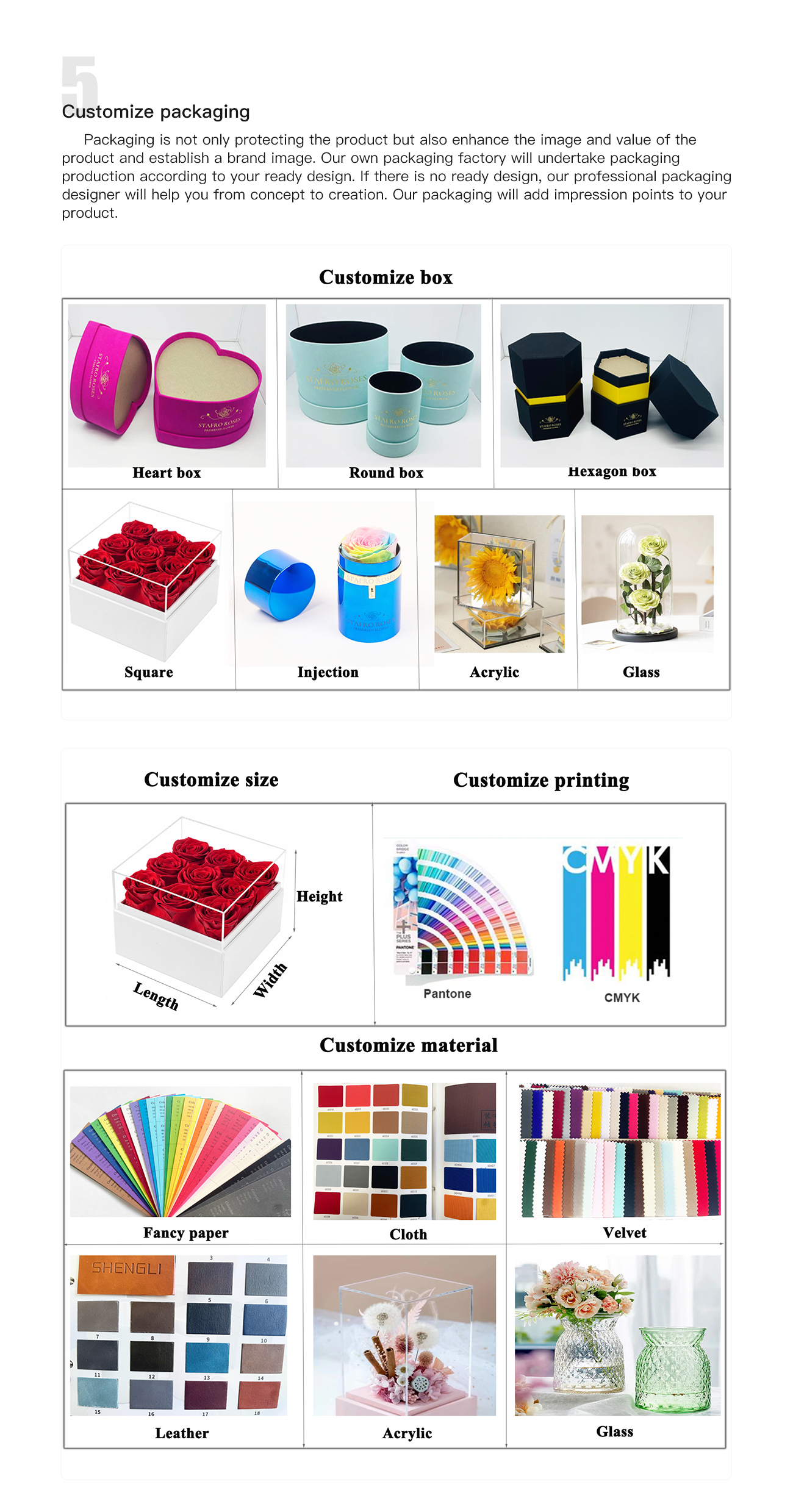
Products


preserved flowers
1.Preservation Process: Preserved flowers undergo a meticulous preservation process where the natural sap and water within the rose are replaced with a special preserving solution. This process allows the rose to maintain its natural appearance, texture, and flexibility, ensuring that it retains its beauty for an extended period without wilting or requiring water.
2.Longevity: Preserved flowers are known for their exceptional longevity, often lasting for several years when properly cared for. This longevity makes them a sustainable and enduring option for decorative purposes and as sentimental gifts.
3.Varieties and Colors: Preserved flowers are available in a wide range of varieties and colors, offering versatility in decorative arrangements and gifting options. From classic red roses to vibrant hues and pastel tones, preserved flowers provide a diverse selection to suit different preferences and occasions.
4.Maintenance: Unlike fresh cut flowers, preserved flowers require minimal maintenance. They do not need water, sunlight, or specific temperature conditions to maintain their appearance, making them a convenient and low-maintenance decorative choice.
5.Applications: Preserved flowers are utilized in various applications, including floral arrangements, decorative displays, and crafting. Their enduring nature makes them suitable for long-term use in interior decor, events, and special occasions.
6.Environmental Impact: The use of preserved flowers contributes to sustainability within the floral industry by reducing the demand for fresh cut flowers and minimizing waste. Their long-lasting quality aligns with eco-friendly practices and supports efforts to reduce the environmental impact of floral products.
Overall, preserved flowers offer a combination of aesthetic appeal, longevity, and environmental benefits, making them a popular choice for both decorative and symbolic purposes.


























